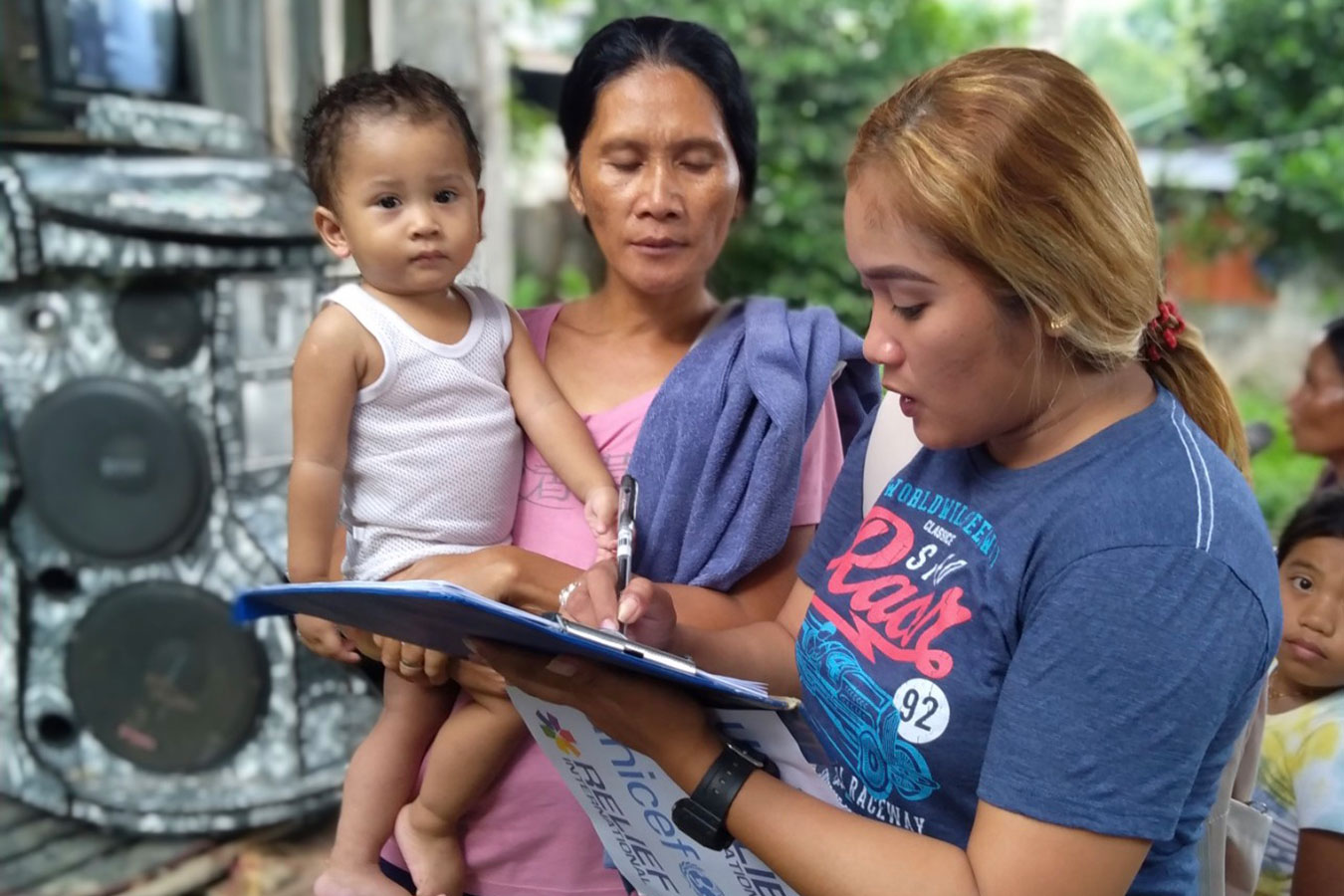The Philippines is struggling to contain major outbreaks of polio and COVID-19, which hit the island nation’s shores within a six-month period. Relief International partnered with UNICEF to respond to both outbreaks in communities on the island of Mindanao.
In September 2019, the Philippines announced an outbreak of polio, nearly twenty years after the World Health Organization declared the country free of the infectious disease. Children are at the greatest risk for contracting the poliovirus, which can cause muscle weakness, paralysis, and, in the rarest cases, can be fatal. There is no known cure for polio but the disease can be prevented with multiple rounds of polio vaccines.
The Philippines has confirmed 16 cases of polio, 4 of which are located in the Mindanao region.
When the outbreak was first announced, the Department of Health in the Philippines launched a large-scale polio immunization campaign in the highest risk areas, including the National Capital Region, Lanao del Sur, and Davao del Sur. The campaign aimed to increase the immunization coverage to 95% in these most impacted regions through community engagement.
However, there remained many obstacles to reaching these ambitious vaccination coverage targets. In the Philippines, many families remain fearful of vaccinations after a campaign to inoculate nearly one million schoolchildren against dengue fever in 2016 went awry and jeopardized the health of more than 100,000 people. In addition, many villages in remote areas of Caraga reject the use of western medicine based on their religious beliefs so educating parents on the importance of vaccinations became an increasingly important component of this project.
With the support of UNICEF, Relief International worked in villages in Northern Mindanao and Caraga to educate parents on the importance of vaccinating their children against the poliovirus. We conducted large-scale community events for up to 200 people to provide information to parents and caregivers on the benefits of immunizing children under the age of five in order to prevent polio. Our teams also went door-to-door to meet with parents with children eligible for the vaccine. These messages were particularly effective in prompting parents to choose to vaccinate their children against the poliovirus because the information was shared by Relief International’s network of social mobilizers, many of whom are trusted members of their communities. Over 4,000 community leaders were trained to help conduct these important educational awareness-raising activities for community members to participate in. Since it was trusted community leaders sharing vital information on the importance on vaccinating children, community members grasped the importance of it and vaccination rates began to increase.
Before the fourth and final round of the vaccination campaign could begin, the island nation reported its first case of COVID-19 on March 7th. The continued spread of COVID-19 forced our teams on the ground to rapidly adapt our response in order to protect families against both outbreaks. We quickly began observing social distancing practices during information campaigns and decreased the number of people that could attend each session. We also printed new flyers with information on the poliovirus as well as information on how to recognize symptoms of COVID-19. Our teams also distributed hand sanitizer and other hygiene materials to promote handwashing as an important preventive measure to prevent the spread of the coronavirus.
These campaign efforts have supported the Government of the Philippines’ Polio Vaccination Campaign, which has provided polio vaccinations for more than 4.3 million children over the age of five in the Mindanao region, and provided thousands more with the information they need to protect themselves against COVID-19.

